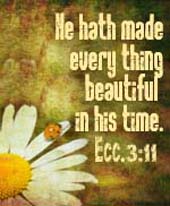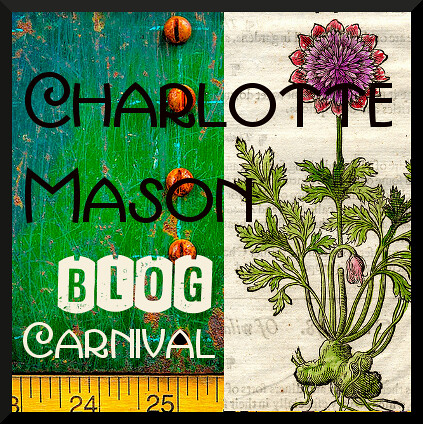I wonder at how thought through the whole thing is too! Imagine how helpful to a child's mind (to MY mind and feeble memory) a book of centuries can be... it is intended that it accompany him or her throughout all areas of study. He is to draw illustrations of artifacts he sees (from museum visits, photographs, etc), fitting them into the time period in which they fit. He could plot the dates of paintings being studied in picture study. He could follow the progressive development of the bow and arrow over the ages, he can mark down the dates of monarchs, discoveries in the field of science, etc.
There are millions of ways to make a timeline and many ways to make a Book of Centuries. But the G.M. Bernau model is superior to other forms for a multitude of reasons.
Here are several advantages:
- Child-drawn illustrations encourage careful observation (see images below for an example).
- Seeing an entire century on a page helps the child envision larger chunks of history at a time.
- Value is placed on the child since it is he who decides what facts are important enough to include.
- Because the book is tailored-fit by the child himself, it is a personal, lifelong source of delight.
I'd LOVE to buy a really nice book like this leather bound one: $40 @ bookofcenturies.com
However, because I didn't buy it when we were back in the US, and we really can't wait any longer (and shipping rates to Peru have always been ridiculous), I've decided to buy a nice quality notebook here and make our own. I think also that making our own will help the boys to personally invest in the project.
The Book of Centuries is different than a timeline in its various forms. We use a communal timeline in our family for the younger years. Our plan is for each child to start their own BoC in AO year 6 or 7. We've taken our pattern from the following description:
Childlightusa - The Book of Centuries Revisited, part one & part two by Laurie Bestvater.
The Book of Centuries by Bernau, a Parent's Review article
Here's how we arranged the pages:
Our notebook has 100 pages (as opposed to 96)
We left a cover page (1st sheet, front and back left blank)
[note: I've reserved multiple pages for each child's beautiful illustrations of the literal biblical 6 day account of Creation.
1 page for each day of creation, should leave sufficient room for their own creativity
(obviously this deters from the Bernau example as her first pages are reserved for the different evolutionary "ages" paleolithic, bronze age, iron age, etc.).]
2nd sheet - 1st day of Creation
backside of 2nd sheet - 2nd day of creation
3rd sheet - 3rd day
backside of 3rd sheet - 4th day
4th sheet - 5th day
backside of 4th sheet - 6th day
5th sheet - 7th day
backside of 5th sheet - blank page for illustrations, 50th century BC - 41st century BC
[Bernau's model left pages for each of the evolutionary ages - paleolithic and such, we'll exclude those]
6th sheet - lined sheet, 50th century BC - 41st century BC
Book of Centuries Notebook (Book of Centuries - 1950? by Eve Anderson? [blue cover]).
Images of Book of Centuries on display @ Charlotte Mason Digital Collection
These two illustrations show how the blank/lined pages alternated.
You can see on how the drawing from the previous blank page is seen through the lined page.
[in the Bernau example and the BoC we see in the CM Digital Collection, the sheets seemed to alternate with lined and blank sheets so that the following would be slightly different, i.e., the back side of the lined sheets would also be lined.]
backside of 6th - blank page for illustrations, 40th century BC
7th sheet - lined sheet, 40th century BC
backside of 7th - blank page for illustrations, 41st century BC
8th sheet - lined sheet, 41st century BC
backside of 8th - blank page for illustrations, 42nd century BC
9th sheet - lined sheet, 42nd century BC
backside of 9th - blank page for illustrations, 43rd century BC
10th sheet - lined sheet, 43rd century BC
etc. :)
The 2 page spread for 1st century BC is followed immediately by a 2 page spread dedicated to the life of Christ (this is another deviation from the Bernau model).
The following 2 page spread would begin the 1st century AD, followed by the 2nd century AD, continuing on through the 21st century AD.
Following the 2 page spread for the 21st century, there is another blank 2 page spread (used as cover sheet to the appendix of sorts). The appendix will include, 6 - 1000 year @ a glace pages, and pages for maps. Following the cover page, the backside of which, the 2 page spread will be reserved for 1000 year @ a glace pages (6 of them representing 6000 years of world history). These pages will be divided into 10 rows of 10 columns. Each square representing a 10 year period. I don't know yet if I will follow through with this idea, but we will leave those pages blank for now with this in mind.
The rest of the blank pages from there to the back of the book are the pages reserved for maps of the child's own choosing, perhaps illustrating country boundaries or wars or marches, etc. The opposite pages would originally have been lined (same as the rest of the book) so as to include the child's short descriptions of her hand drawn maps.
I will update as our work progresses ;)
Notes if you plan to make your own:
Buying the book ready-made would be 100x easier... just sayin'.
Spiral binding is great for lying flat, but not as durable.
The notebook should have at least 96 sheets.
I prefer blank as opposed to lined because you can always draw lines in, but for the pages reserved for illustrations, lines are not lovely.
A medium/thick paper weight is nice so as to prevent ink leaking through from page to page.
"The Book of Centuries is to history what the nature notebook is to Nature Study." Laurie Bestvater
















10 comments:
We always seem to be in a similar place in our incorporation of Miss Mason's ideas. I have been thinking a lot about the BOC. I do like your plan very much. I will be interested to see how it unfolds for your family.
Great points on the BOC accompanying all areas of study. Thank you for the details on what you're doing! It's so helpful to hear other perspectives on things. I ordered the Moleskine I blogged about, which I love, and it's been sitting on my desk waiting for me to start it with my daughter and well... we haven't gotten there yet :)
This year we made our own frugal timeline book (BOC) which has worked very well.
We used a nature study book; with one page blank (where we paste illustrations, maps and clip art) and the other side lined for writing.
I still believe that young children get a better sense of time by looking at a wall chart or timeline. It offers a "bird's eye view" of time. My older children's BOCs are lovely and detailed as we keep adding new dates and events.
Hi Amy! This sounds wonderful, especially for the older ages. I just made our own book of centuries, I adapted it from Simply CM. I just printed the pages and had it spiral bound. We are planning to use it for all our studies, I think that's the great thing about it. I especially like the link between Bible lessons and history. Maybe Leon is a little bit too young for it, but otherwise it will be interesting enough for me :). I would love to see your BoC one day! (still looking for a house for you, btw, no luck yet...).
Martine
Reading your blog posts really encourages me to move forward with a Charlotte Mason method. Please please don't delete any of your blog posts :) my eldest is just 4 :)
@Phyllis,
Yes, most likely we're kindred spirits! ;) It just takes longer to find out never yet having met in person!
@Naomi,
I too put off starting until my boys were good and ready, and then I had to wait some because of furlough and all... we can wait no longer! I was so happy to read about your ideas as well. :)
@Nadene,
We did a Timeline Book too in the younger years. Yours are certainly lovely :)
CM did use other timelines and charts in the early years. The model I've outlined was intended for the student who already has a grasp of the flow of history (probably 10 years and older).
@Martine,
Yes. Our "timeline book" (which is what you have made as opposed to a BoC - by CM's terminology, see the childlight posts linked in the post) turned out to be mostly my project ;) even if the boys did do most of the work. It did lead into the BoC nicely though I think.
I'm so glad you've made one! I imagine Leon will get into it with time. :)
Thanks for your kind comments!
amy in peru
Thanks Amy for the links to Laura's posts about the BOC I really enjoyed reading them. Makes me want to make a BOC of my own. My boys are still too young to begin one but looking at your ideas inspire me to keep this in mind for later years.
Hope your kiddos have a ball with it! You are giving them such a wonderful enducation!
Would you be willing to post some pictures of your Book of Centuries now? Also what kind of notebook did you use?
Would you be willing to post new pics of your BoC?
approve.
Post a Comment